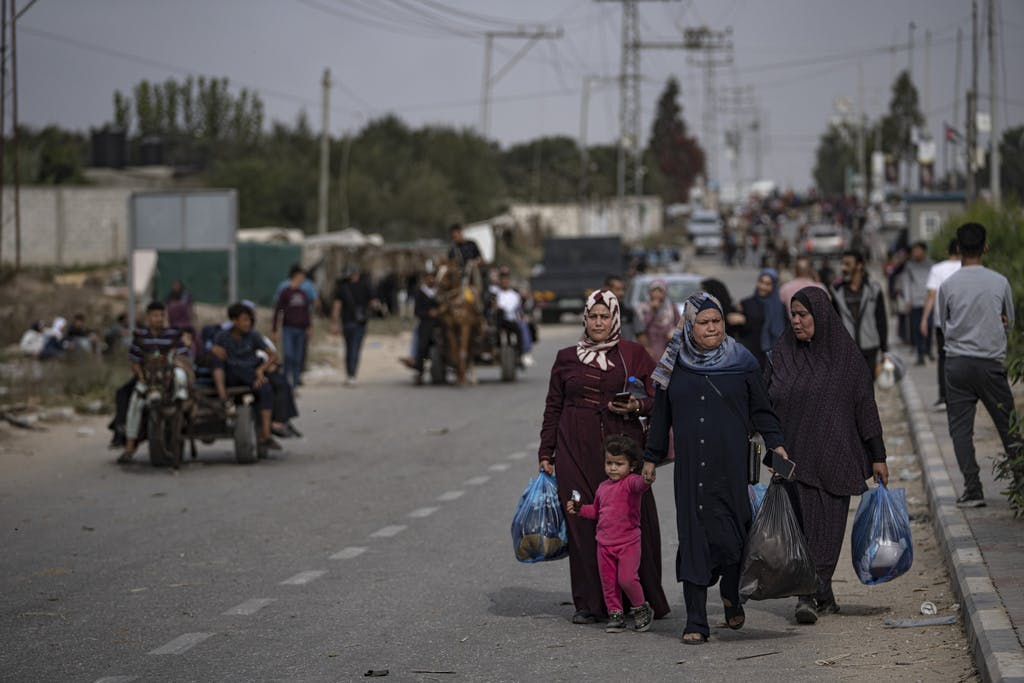Heavy Fighting Around Shifa Hospital as Israel Attempts to Dismantle Hamas Stronghold
Netanyahu rejects growing international calls for a cease-fire unless it includes the release of all the nearly 240 hostages, including Americans, still held by Hamas.

Israeli strikes pounded Gaza City overnight and into Sunday as ground forces battled terrorists near the territory’s largest hospital, which Hamas has established as its base of operations.
In a televised address on Saturday, Prime Minister Netanyahu rejected growing international calls for a cease-fire unless it includes the release of all the nearly 240 hostages captured by Hamas in the October 7 rampage that triggered the war, saying Israel was bringing its “full force” to the battle.
Israel has vowed to end Hamas’ 16-year rule in Gaza and crush its military capabilities, blaming the terrorists for the war’s heavy toll on the 2.3 million Palestinians. But it has come under mounting international pressure over the plight of civilians.
In Gaza City, residents reported heavy airstrikes and shelling overnight, including in the area around Shifa Hospital. Israel’s military said there was a safe corridor for civilians to evacuate from Shifa to southern Gaza. The military said troops would assist in moving babies on Sunday, and that it was in contact with hospital staff.
Mr. Netanyahu has said the responsibility for any harm to civilians lies with Hamas. Israel has long accused the group, which operates in dense residential neighborhoods, of using civilians as human shields. In an appearance on NBC’s “Meet the Press” Sunday, Mr. Netanyahu said Israel offered to provide fuel to keep the Shifa Hospital running, but Hamas rejected the offer.
On Saturday, Mr. Netanyahu began to outline Israel’s postwar plans for Gaza, which contrast sharply with the vision put forth by the United States.
Mr. Netanyahu said Gaza would be demilitarized and that Israel would retain the ability to enter Gaza freely to hunt down militants. He also rejected the idea that the Palestinian Authority, which currently administers parts of the West Bank, would at some stage control Gaza. Hamas drove the PA’s forces out of Gaza in a week of street battles in 2007.
Secretary of State Blinken has said America opposes an Israeli reoccupation of Gaza and envisions a unified Palestinian government in both Gaza and the West Bank as a step toward a Palestinian state. Even before the war, Mr. Netanyahu’s government was staunchly opposed to Palestinian statehood.
The war threatens to trigger a wider conflict, with Israel and Hezbollah militants in Lebanon frequently trading fire along the border. Hezbollah fired anti-tank missiles into Israel on Sunday, and Israel responded with artillery. Israel’s power company said workers repairing lines damaged in previous attacks were wounded, and video footage showed two vehicles on fire.
Israel has agreed to brief daily periods during which civilians can flee the area of ground combat in northern Gaza and head south on foot along two main north-south roads.
The war has displaced over two-thirds of Gaza’s population, with most fleeing south. Egypt has allowed hundreds of foreign passport holders and medical patients to exit through its Rafah crossing, as well as the entry of some humanitarian aid.
